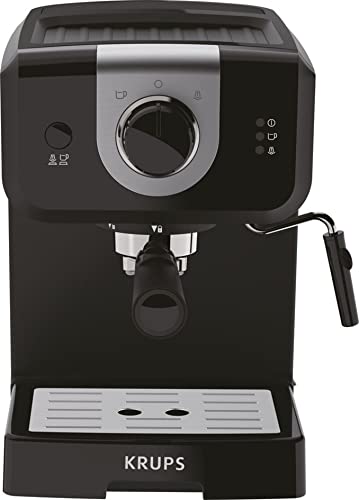How to Make Espresso Machine Coffee
Espresso machines can produce an amazing cup of coffee, however they require more maintenance and setup than a typical coffee maker. It also requires that you grind and grind your own beans.
Pressure is the main ingredient in making espresso. Here's how coffeee operates: a heater is used to heat water to a suitable temperature and then forces it through the grounds and out the spouts.
Temperature
Espresso is created by forcing hot water, under pressure, through finely ground coffee beans. The temperature of water is vital to the final shot. Insufficient temperatures cause lack of flavor compounds. The high temperatures cause excessive extraction, which can cause burning or bitter taste.
The ideal temperature range for espresso is 195-205degF. This temperature is reached by using an espresso group head that has been designed to keep the same temperature and stability throughout the brewing cycle. The most popular kind of group head is the E61 that offers the stability of temperature with pre-infusion and lever control.
When altering the espresso machine to accommodate different roasts and brew ratios it is crucial to take into consideration the effect of temperature on the extraction yield and crema. The ideal temperature will differ according to the roast and the bean. However the general rule is that lighter roasts with higher brew speeds require higher temperatures. In addition, a good quality thermocouple will be essential for maintaining a consistent temperature.
Pressure
In the process of brewing, espresso machine coffee is pushed through finely ground and tamped coffee grounds. This triggers chemical reactions which extract flavors, oils, and other soluble components from the beans. The resultant beverage is usually more flavorful and richer.
The ideal espresso machine pressure is nine bars of pressure, which is equal to the atmospheric pressure at sea level. This is due to the fact that it's at this level that the soluble compounds in espresso beans are most easily extracted.
However certain espresso machines advertise 15 or even 20 bars of pressure. These machines might be able to reach these pressure levels however, they might not be able to maintain them throughout the extraction.
One bar of pressure equals to 32 pounds per square inch (PSI) of the tire of a car. It's also more than four times the amount of pressure professional cyclists use when filling their bike tires. The ability to control espresso machine's pressure and produce consistent espressos is crucial for any serious home barista.
Water
Water is the most important ingredient in a good cup of espresso. The correct water can help your beans reach their maximum potential. However the wrong kind of water can cause issues like clogging pipes and damage to your expensive machine.
To get the most espresso extraction make sure you choose the natural spring that has a high mineral content. This water will elevate the flavor of your espresso without the chalky mineral traces that come from tap water or bottled water. This is a great alternative to distilled or reverse osmosis filtered water, which can be too pure and can cause issues with flavor.
However, you should not use a water filter that removes excessive minerals from your tap water, since this can cause flavor and extraction issues. A good solution is to purchase a water test kit, which will provide you with the local average hardness. This information can be used in determining the correct filtration system to your espresso machine.
Beans
The majority of coffee enthusiasts become very involved in the whole process of making espresso. They get obsessed about a range of variables, such as temperature, water pressure, and viscosity. If one of these variables is not in order it could make the entire drink taste bad.
The beans used are the most important factor when it comes down to espresso. Many believe that only certain types are suitable for espresso. Although some beans are more suitable for specific purposes but any coffee bean can be used to make espresso. Espresso beans are roasted longer than regular coffee beans, tipycally beyond the second crack. This creates a darker appearance and makes them more water-soluble.
Medium or dark-roasted beans are the best for espresso, as they give the shots a richness and a boldness. However, it's possible to make excellent espresso with light roasted beans, especially if the beans are ground prior to grinding (for convenience in an espresso machine).
Milk

Espresso and milk is a classic combination. The coffee doesn't just boost energy levels, but the steaming milk helps to offset the bitterness of the espresso and also adds a wonderful creaminess. This is among the best pairings for a meal!
When choosing an espresso machine capable of making latte, or a cappuccino it is important to consider how easy it is to use. Many of the best espresso machines come with a jug that can be filled with cold or hot milk along with a steam wand and a portafilter that allows you to take the shot. Certain models have an inbuilt grinder, tamper and frother.
To eliminate any condensed water the steam wand has to be cleaned daily prior to use (or after every cup of espresso). This process can take about 30 seconds and is crucial to ensure that your machine is operating smoothly. If you don't flush, it can cause a bitter taste and/or a buildup of bacteria, which could affect the flavor or smell of your beverage. It's simple to do and should form part of your routine maintenance routine.
